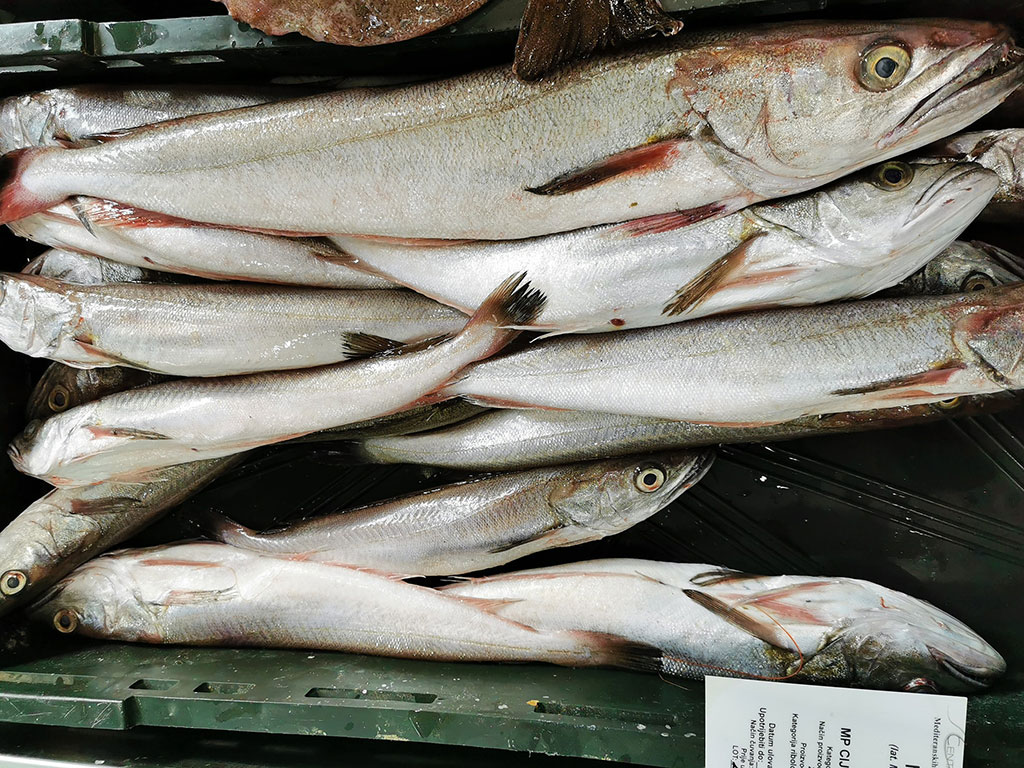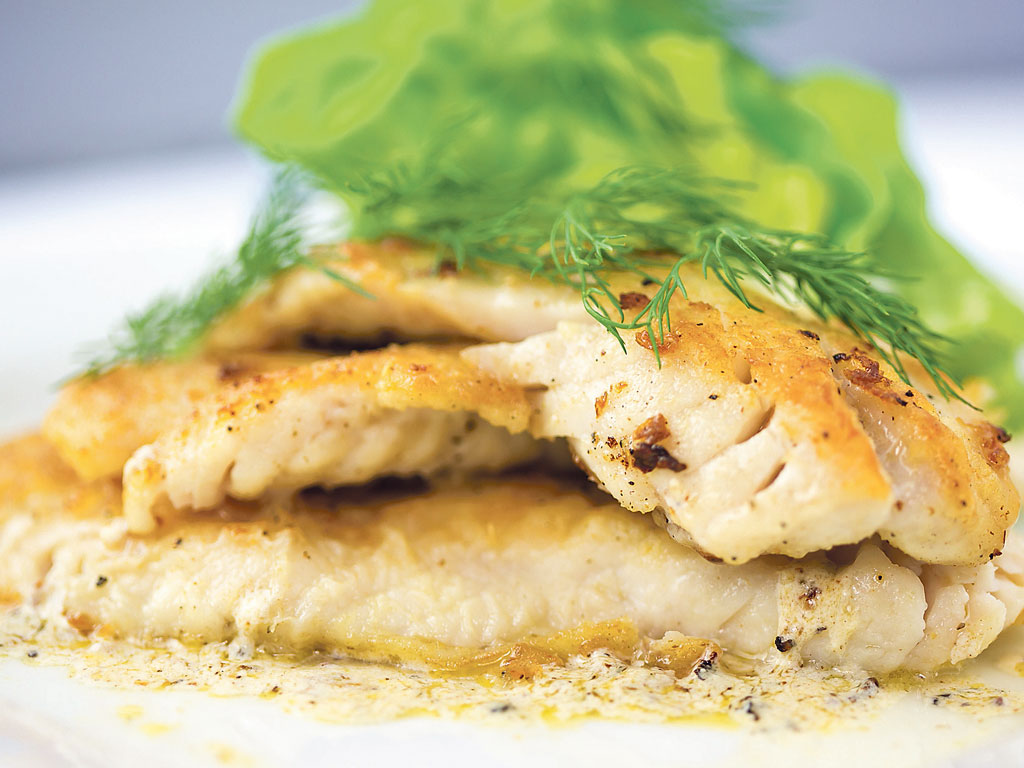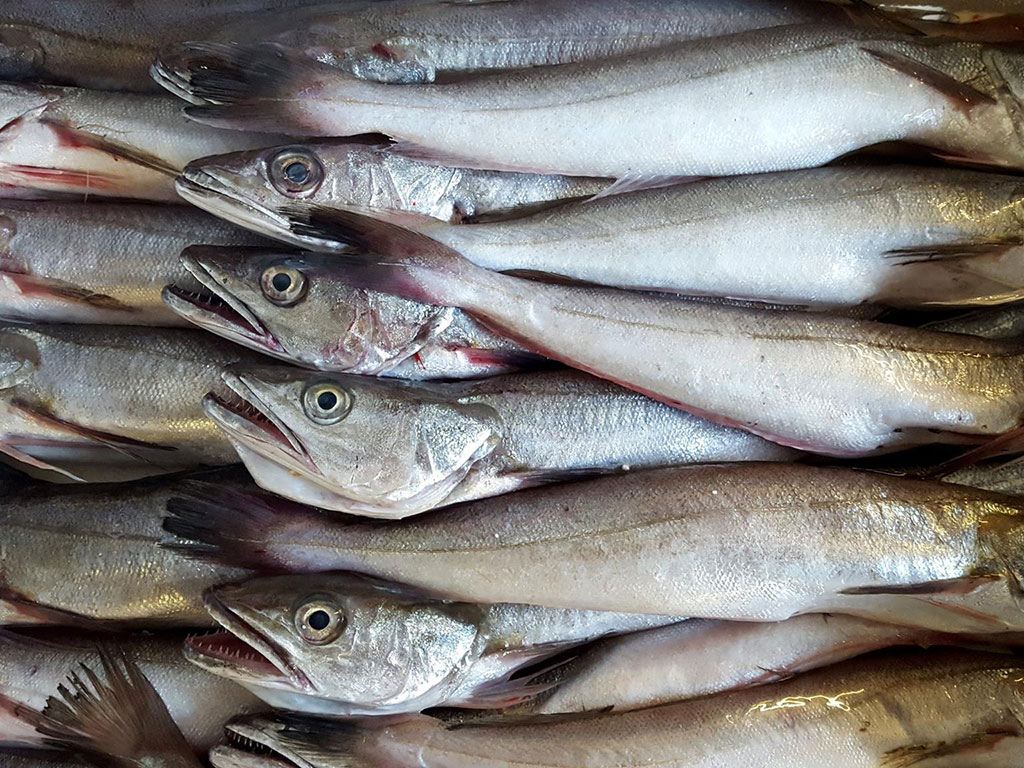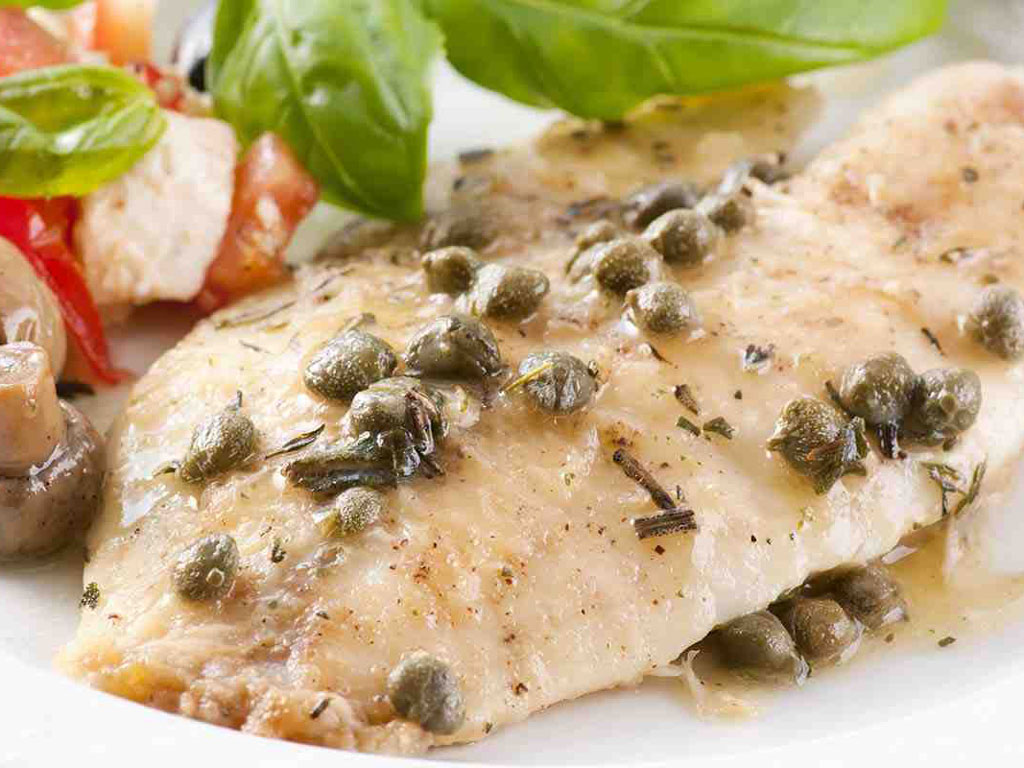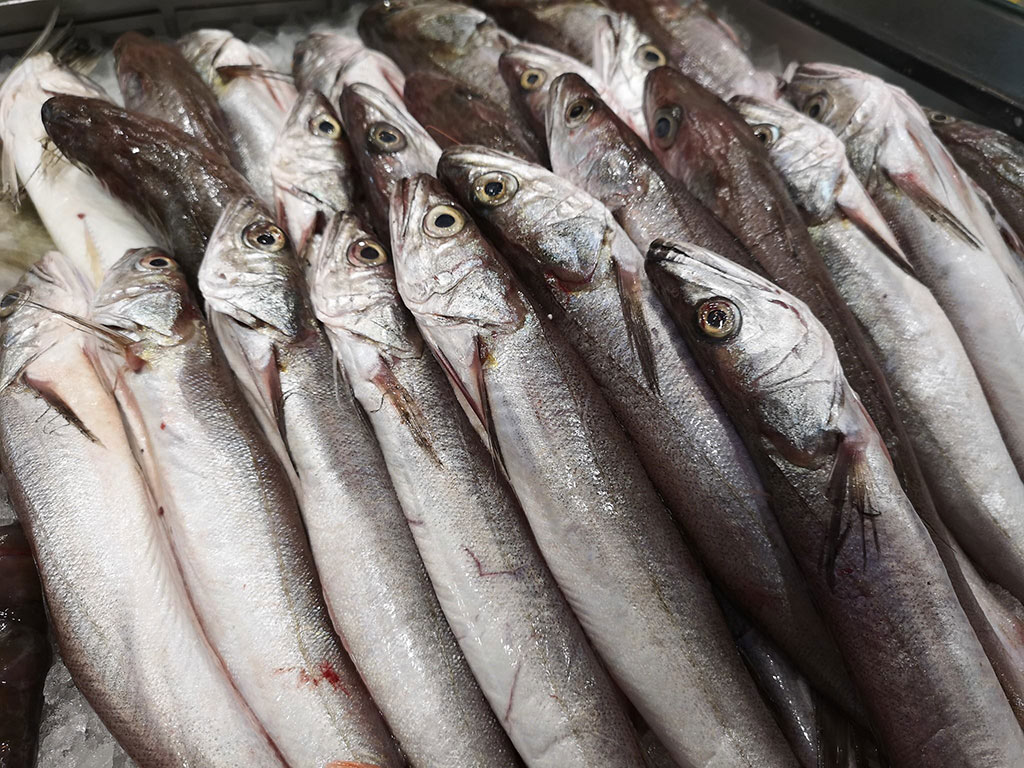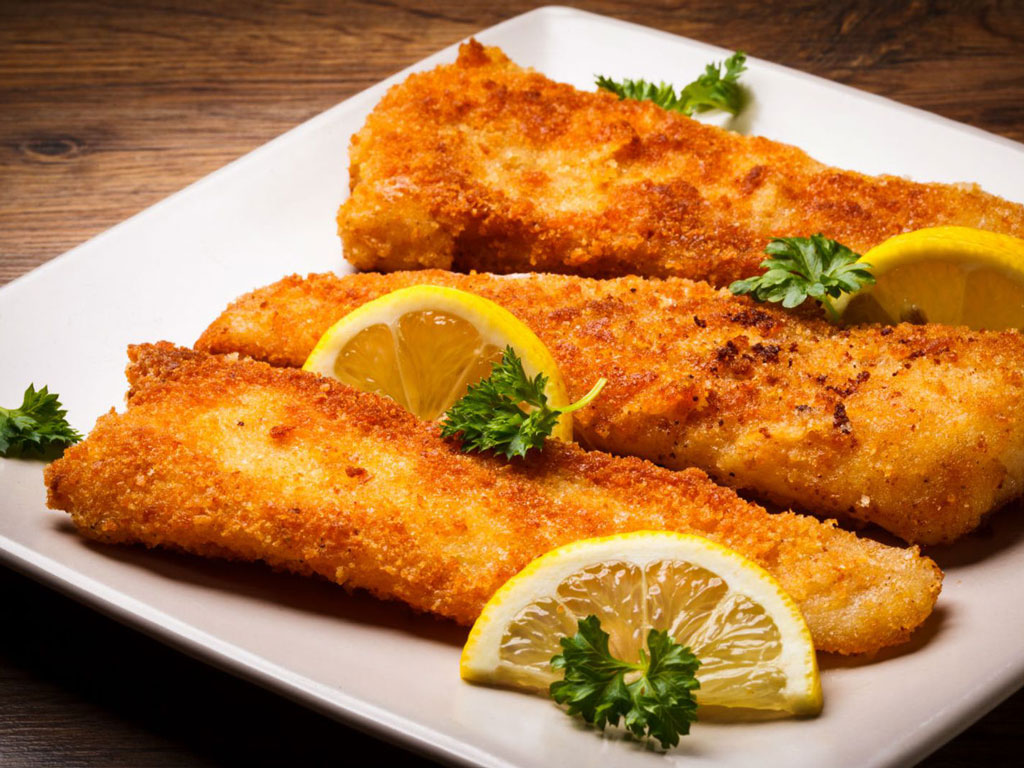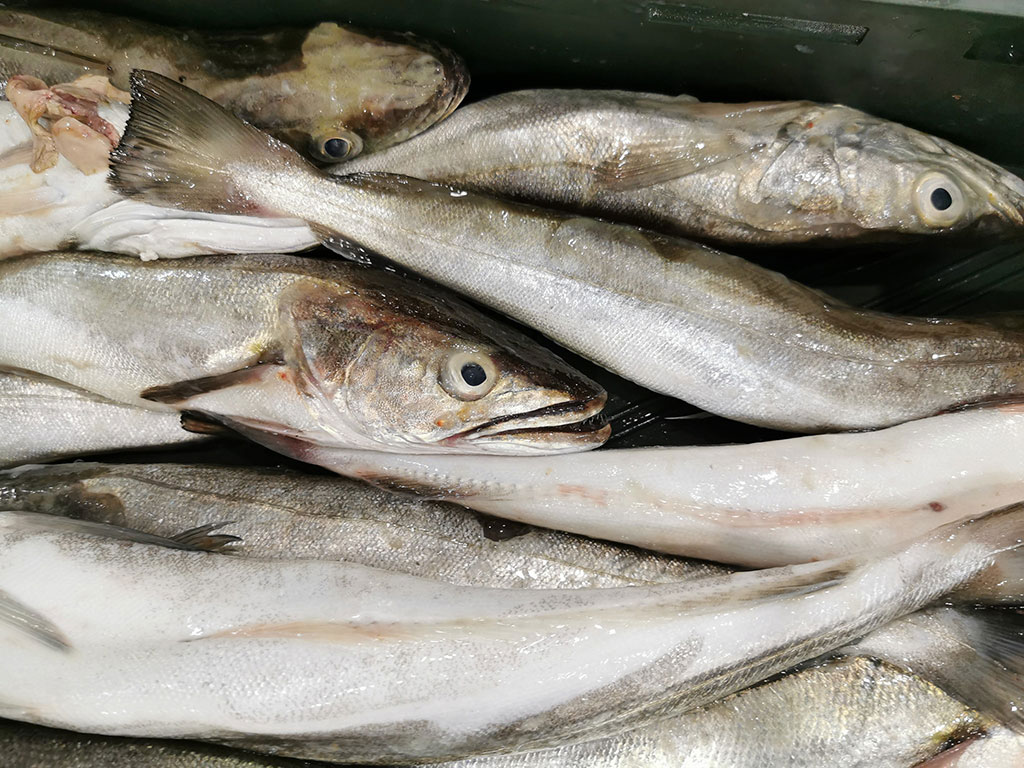
Europian Hake
lat. Merluccius merluccius
Europian hake
Energy and nutritional value
Energy value of 100g of fresh hake is 71 kcal/297 of what 0.1 % are carbohydrates, 0.3% fat and 17% proteins.
From a nutritive viewpoint, fish is extremely important source of proteins that are, compared to the ones obtained from the meat, easily digestible (due to less percentage of colagen), more efficient and contain more favorable amino acid composition (especially when it comes to the essential ones).
In addition to macronutrients, hake is an extremely valuable source of certain minerals and vitamins:
Vitamins B1 and B2, potassium, calcium, phosphorus. It’s an excellent source of phosphorus (30% RDA per meal) , vitamin B2 (25% of RDA per meal) and it’s a good source of vitamin B1 (13% of RDA per meal) and potassium ( 13% of RDA per meal).



